Be the hero. Learn how to inspire “the love of art” in your child while at the art museum. Tips from infants to high-schoolers.
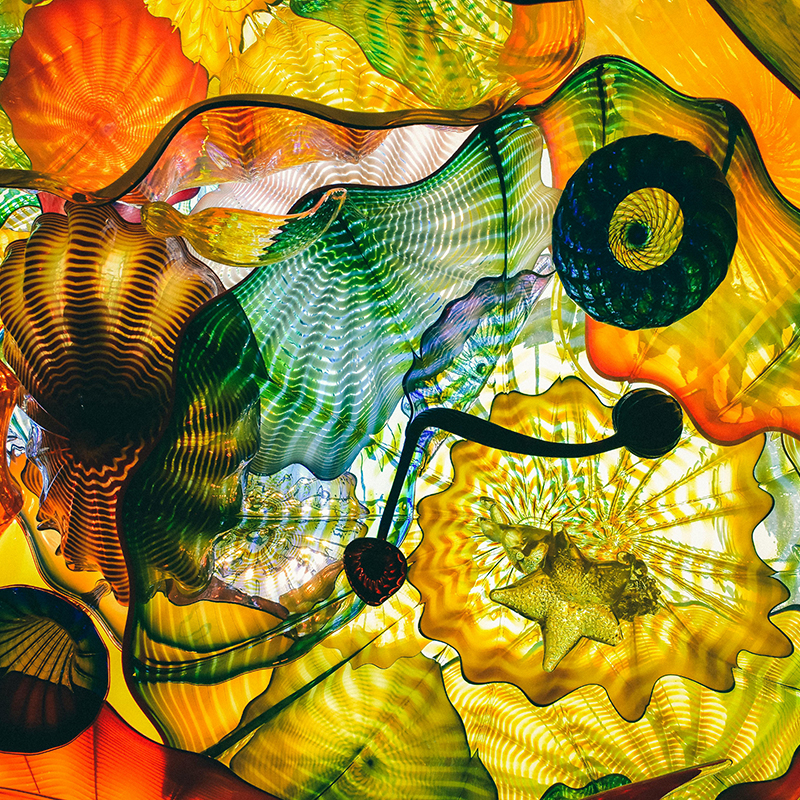
When my oldest son was 3 years old, the two of visited our local art museum. Nothing new here…I took him many times before… but this day was special.
There was a temporary exhibit at our local art museum featuring an artist who created sculptures in wood and wire. The artists’ name I don’t recall. The sculptures were nautical-like in form. This excited my young son because boats were something he was familiar with. We were members of the local yacht club and his father raced sailboats.
My 3-year-old proceeded to critique the sculptures, explaining the similarity to sailboats. He talked about how the wires created new designs as you moved around them, and how the wire and heavy wooden forms contrasted with one another.
He talked for a good half hour. As we went from one sculpture to the next, he began to draw a crowd. No one could believe the vocabulary of this three-year-old, let alone the reality that his comments were spot on. It was definitely a proud moment for me.
Having my young son critique to the crowd was certainly not my goal, but understanding and enjoying art was.
You Too Can Teach Your Child a Love for Art
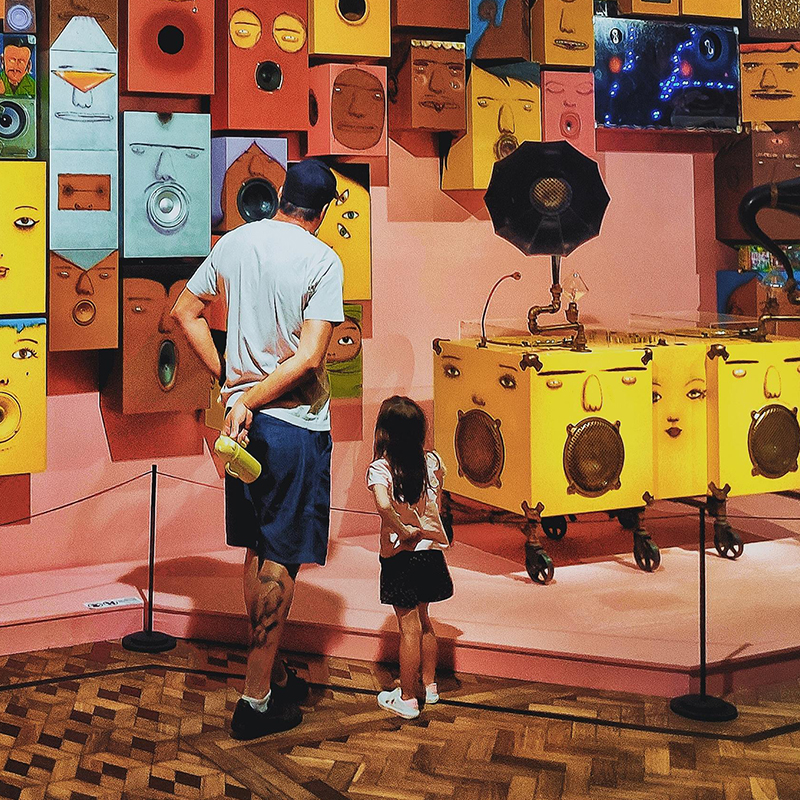
Plan a trip to Your Local Art Museum …
- Keep it short…not even my husband can endure an entire art museum.
- You know your child’s signals best. You’ll want to make your exit when the interest wanes, so pick 1 or 2 rooms to visit. You don’t want to overwhelm your child. You can come back again another day to continue the adventure.
- Check out the art museum ahead of time so you know what you want to see. Choose a theme. The modern art section is a good place to start. It has bright colors, texture, lines, shapes and variety that may attract your child. Simplifying the different styles, children can learn quickly to recognize a variety of artists… such as Piet Mondrian, Jeff Koons, Jackson Pollack and Geogia O’Keeffe. I centered much of my elementary art classes around modern art. Young children love it!
It’s all about the Child ….
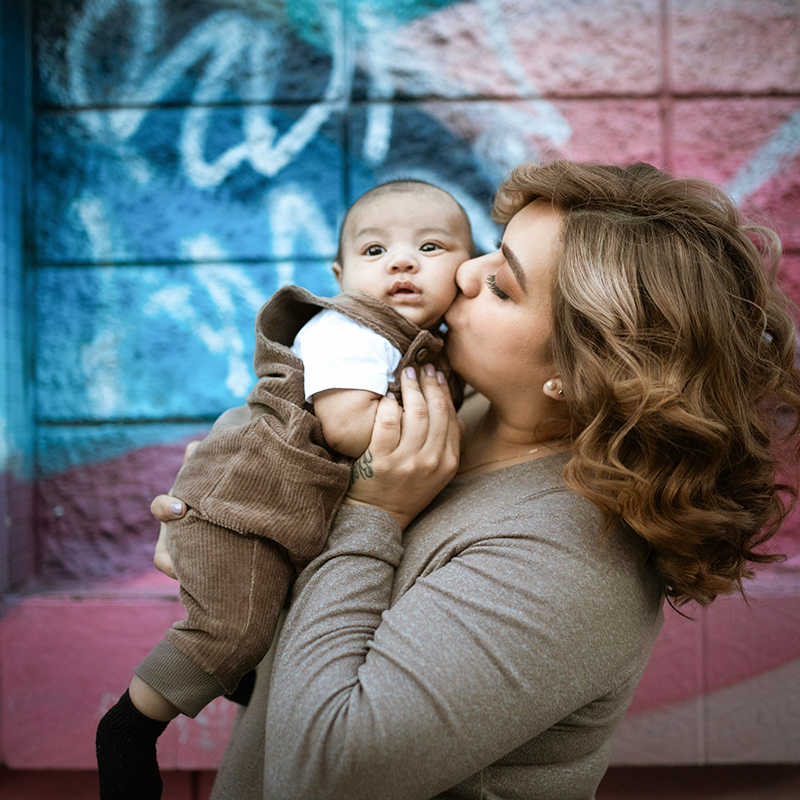
If you have an infant or toddler
- If possible, take only one child at a time. If not, bring another adult…husband, your parents, sister or best friend to take turns with the other children. The company will make it easier for you. In the meantime, you can have fun teaching the adults something too. Remember, this is supposed to be a fantastic adventure for everyone involved!
- Leave the stroller at the door. I love the closeness of carrying your child. The two of you will connect much more readily when you are viewing the art. S/he will feel like your whole devotion is on him/her.
- Talk to him/her. This connection is why you want to carry your little one. Read the information on the walls out loud to your child if you don’t know what to say about the art. Ask your child questions…even if s/he can’t speak yet. I know you can hold a two-way conversation with yourself.
If you are visiting with a school-age child
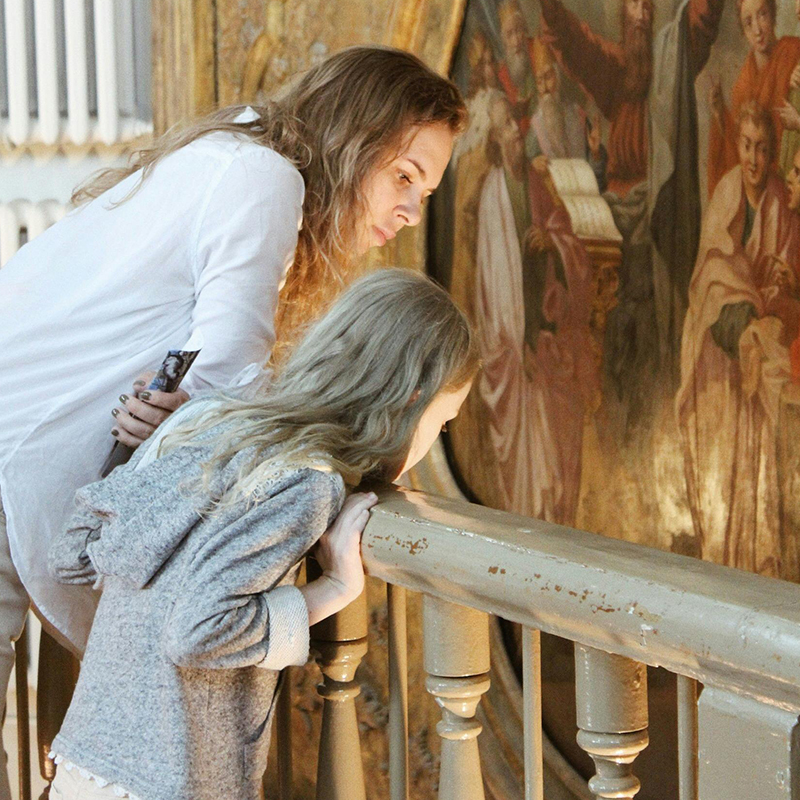
Ask lots of personal questions. Keep it conversational. It’s NOT a test! Here’s some examples:
- What do you see first in this artwork? (What draws your attention first is most likely the subject of the painting. If there is no recognizable subject, then it is either the lightest or brightest spot in the picture- located near center)
- Describe (pick one) the colors, lines, textures, shapes. (Descriptions can range from actually what you see, or an interpretation of a mood or feeling you get when looking at the art)Can you find___ in the art? (Look for intentional or unintentional objects within the swirls of paint, maybe a very small detail, or gradual change of color? It depends on the artwork you are looking at. Much like how the multiple wires crossed and changed their design when you moved around the sculpture my 3-year-old was observing.)What do you feel when you look at this artwork? (Many artworks have strong emotional vibes. See if you can pick up on them. It could be from the fast brushstrokes the artist used to create the art. Maybe the intensity of color…whether dark or bright. Maybe the illusion of depth or a confusing composition.)What do you think the artist is trying to say to you? (Did you know that artists often have a purpose, a message they want to convey to their audience? If you are looking at a Clyfford Stills ‘Color Field’ painting, he’s trying to envelope you in his colors, with messages of containment vs liberation, or life and death.)
- Which artwork do you like best? Why? (The response is a purely subjective answer to your question. No wrong answers. But the value in this question is in the deep contemplation of having to come up with an answer and the why.)
Make statements, be as involved with the conversation as you expect your child to be.
- Tell a little about the style; how art reveals the time periods’ culture, history; tell a bit about the artist and his/her background. (The art of any period can give wonderful clues as to the values held in that culture/society. During the Renaissance, great value was placed on the sciences and math. This was the birth of linear perspective… a mathematical formula for showing depth accurately. During the Ancient Greek period, art wasn’t art unless it was beautiful. More value was placed on shock and awe than beauty in our own time period.)
Compare one artwork with another.
- Point out what is common to each example of one artists’ art. How can you tell that this artist did these artworks? What is different from one artist to another in the same time period? (These particular questions are for any art period starting with the Renaissance. Before that, artists rarely signed their name because they were considered craftsmen, not individual artists. They joined a guild and worked as a team.)
- What does the art tell you about the time period? (The Impressionists were among the first artists to sit outside and paint. Before that, artists did the majority of their art in a studio. Why? Because paints had to be painstakingly ground and mixed by hand. At the time the Impressionists came along, paint was available ready-made in tubes, allowing artists to move themselves outside to paint. This freedom started an entirely new art period! There are so many stories throughout history as revealing as this one. Just look for them.)
It’s a bit different if you are a teacher with your class, but the excitement and your involvement with the children should be as enjoyable.
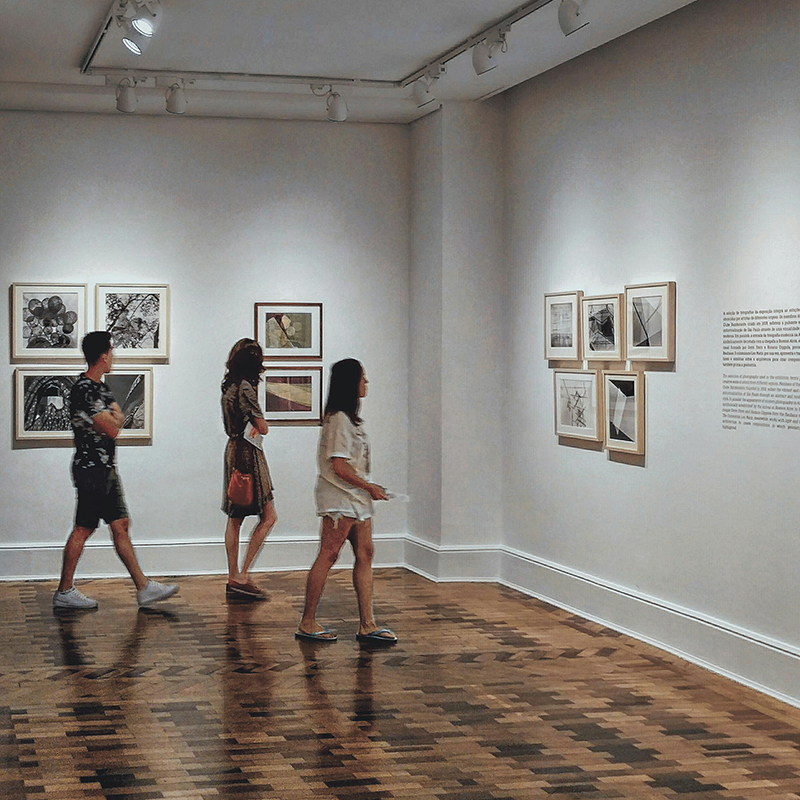
As a teacher with a group…
- Discuss the field trip with your class BEFORE the trip to the art museum. Make sure they understand proper etiquette and rules to follow.
- Plan ahead for your trip. Have a theme for the museum visit. Connect it with what you are teaching in class. (You don’t have to be an art teacher to take your children to the art museum. Many subjects can be augmented using art. Just like the example above about linear perspective developed during the Renaissance can be a math lesson.) Schedule your visit with the museum. Ask for a docent to lead your field trip or talk to a docent to help prepare a worksheet.
- Every child should have a pencil and a clipboard with a prepared worksheet. (Pens and markers are never allowed in art museums…pencils are your only option. Make sure the museum knows you plan to have your students write or draw while visiting. They may have additional rules for you to follow.) The worksheet helps engage the child/keep him on task.
- Have students work in small groups. Collaboration will help them stay on task, makes it more fun for the students and sharing the load will get more done at a higher level of understanding.
- Make the trip easy on yourself. Think about what organizational plans you can make. (For instance… keeping the students in one room at a time so you can keep your eyes on everyone. Or, making a specific lavatory break time, so you will not have students coming and going every few minutes and accomplishing nothing.)
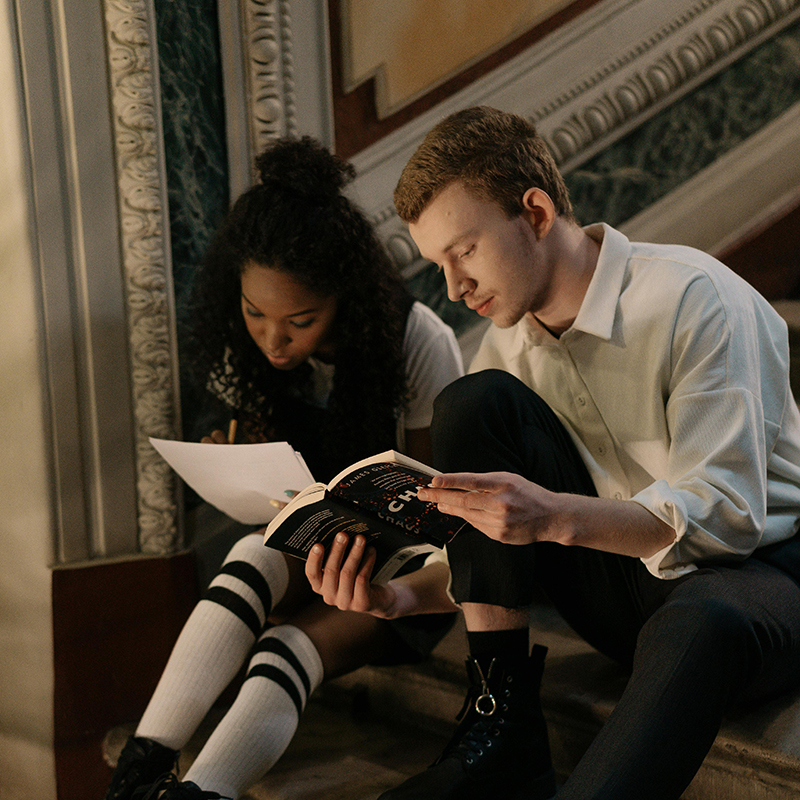
Conclusion …
Giving your child the opportunity
to become a life-long lover of art is a gift. One that you can easily give by
devoting a little time, displaying your enthusiasm and connecting with your
child. Who knows, that child may become
the next great artist of the century. If not, no worries, because art develops
the mind in a myriad of beneficial ways…but that is a subject for another blog!



0 Comments